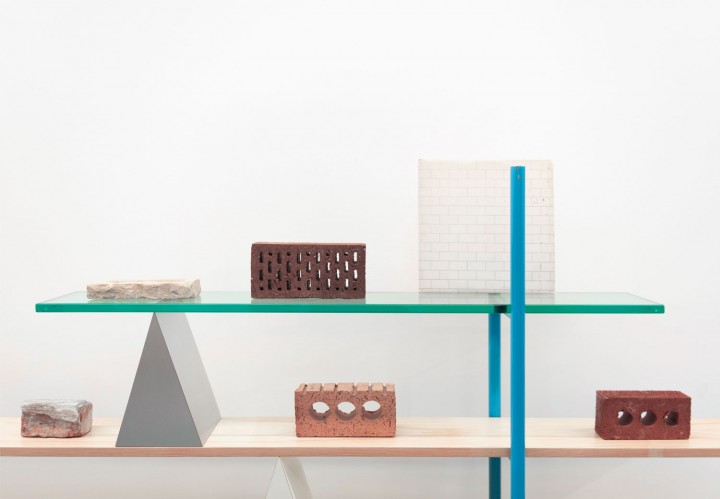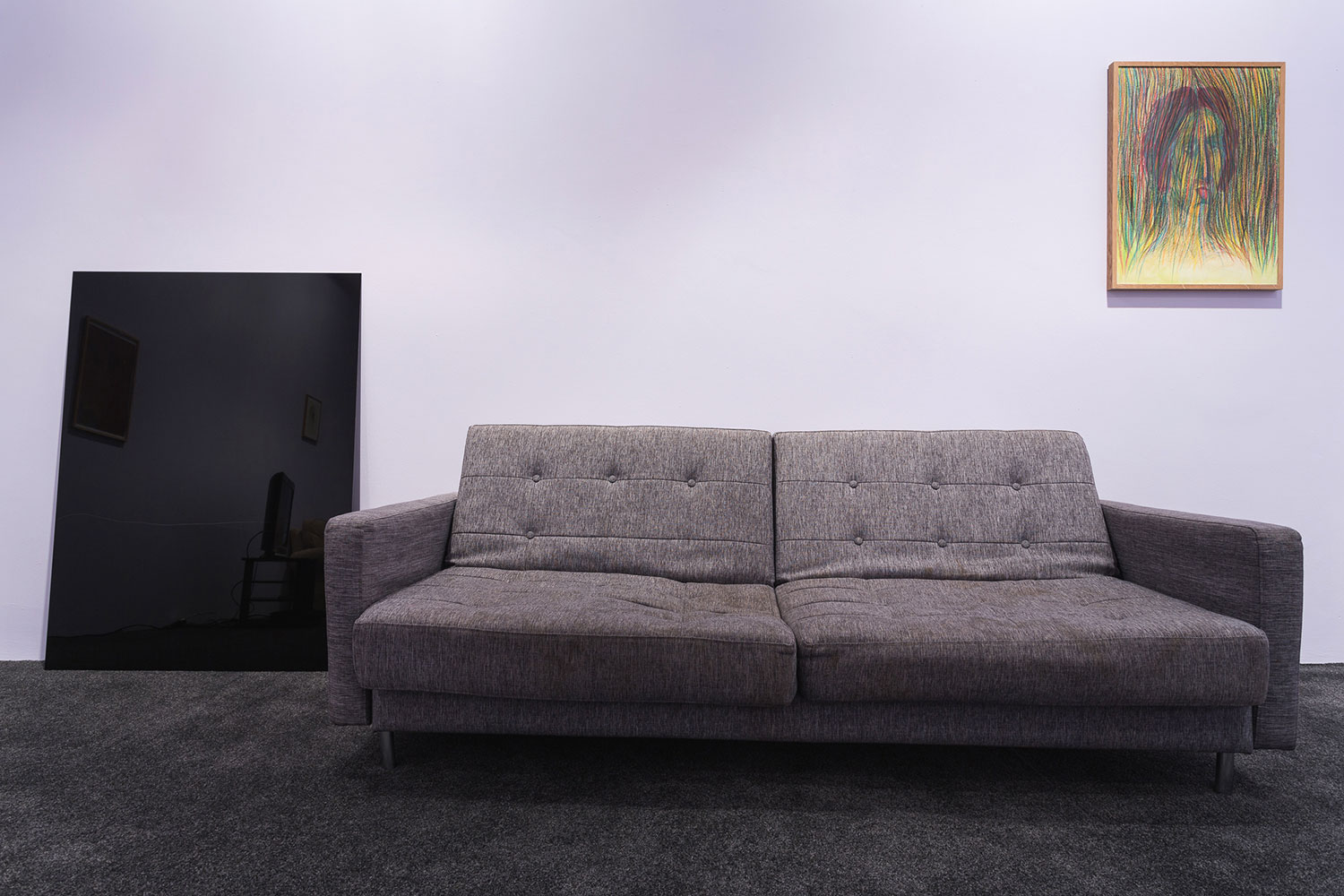For his exhibition at the Serpentine Sackler, Martino Gamper creates an environment resembling a furniture salesroom. Performing the role of designer, artist and curator, Gamper examines the multifaceted role of design in contemporary society. Resisting any simple definitions of his practice, Gamper enjoys breaking down the barriers between fine art and design to produce work and exhibitions that embrace hybridity. Taking bookcases as his primary subject, he lines the walls of the gallery with multiple examples, each made by different designers over a period of sixty years.
Pieces by iconic designers like Fornasetti and Ponti are set beside more prosaic products by chains like IKEA. Many of the shelves are activated by the addition of disparate objects selected by collaborators in the exhibition. So intricate is the conceptual approach to staging this exhibition that each of these 268 objects used to dress and animate the shelving are described on an accompanying sheet. A bookcase by Charlotte Perriand has been dressed with eclectic objects such as a model Eiffel Tower and a mass-produced brush, among many other things referencing taste and practicality. Elsewhere Gamper stacks up diverse vessels made of wood on his own shelving as if on display in a craft gallery or department store.
Within one room, Gamper lays out design catalogues on top of his own furniture as a communal space. In a second room, the highlight of the show, he arranges three display cases containing design notes by Enzo Mari, held down in stacks by unique paper weights he adapted from prior usage: a brass door handle, a tap, a pair of boules and other sundry objects chosen with an eye for their pleasing formal qualities.
Gamper immerses his audience in design aesthetics, richly illustrating the complexity of taste, conditioned by commercial and cultural imperatives. We are asked to consider how designers and artists fashion the material world to specific ends. A beguiling exhibition, it reveals the opportunities and contradictions of making objects for utility and pleasure, and how they acquire a symbolic power in their journey from design to construction to use.



